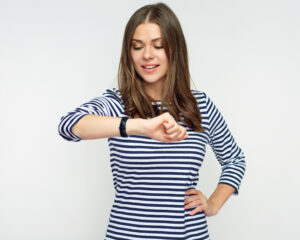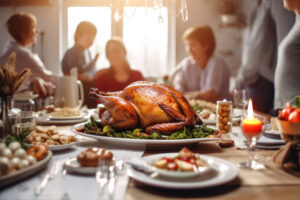I know, I know, you don’t have time to read, isn’t that why you are reading my blog? But if you do get the chance, on the next road trip or stealing a few minutes on the weekends, you want to know what’s not a waste of time, right?
Summary:
- Here’s a list of all my top fitness-related books by category of diet, exercise, and outlook.
- Each one was selected for its ease of readability and also for the ability to put it down and pick it up weeks or even months later and not be totally lost.
- I value a lot of the content of these books, but don’t necessarily agree with all of the advice. Nevertheless, I still recommend them because they are the best of what is out there.
- Plus, I have an alternate solution to get more of the content, if you REALLY don’t have extra time to read.

Fitness/nutrition books
The New Rules of Lifting for Women, by Lou Schuler (workout programs by Alwyn Cosgrove)
Cleverly mimicking (whether intended or not) the “New Rules” from Bill Maher, it is a “breakthrough” book that is designed to dispel a lot of common myths women have about exercise and diet. I put “breakthrough” in quotes because by the time I read this book I had seen a lot of this advice before, but the nice thing about this book is that it is all in one place and also includes detailed workout programs. The premise, as the title implies, is that strength training is king for women that want to be in shape (the cover promises lifting like a man, looking like a goddess).
The book gets granular about common questions and myths about weightlifting, cardio, and nutrition. etc. There is a workout program with several “Stages”, each lasting 4-8 weeks depending on frequency of training. The book also gives guidance on how many sets and reps work best for building lean muscle, and what movements are more effective.
One common conception it blows through is that higher reps and lighter weights are better (an argument advanced by celebrity trainers like Tracey Andersen). Instead, the author advocates less reps and higher weight. He contends that the popular idea that women can get “bulky” by lifting weights is not supported by science, and in fact, if your goal is fat loss, that should be your approach.
Notwithstanding the emphasis on strength training, it does recognize the role of cardio in weight loss, though it does conclude that ultimately it is not “necessary”. (new rule #10). The strength training versus cardio debate is alive and well, and I will talk about it in an upcoming post.
Thinner Leaner Stronger: The Simple Science of Building the Ultimate Female Body, by Mike Matthews
This book is widely advertised, and by a best-selling author, so you may have heard about it already. It is specifically designed for women, promising to help women build their ultimate body. It has a workout program focused on developing aesthetics for women. In other words: lose weight, build muscle, and look better naked.
The good news is that up front there are at least a dozen success stories and inspiring before and after pictures from women of all ages and backgrounds (moms, working women, women over 50, etc.). The fitness nerd in me loves that the book starts with educating the reader on the science of the body, food, and exercise, all explained in very simple terms, with summary sections at the end of each chapter. If you are too busy, you can skim that part and go back to it later.
The book, like New Rules, debunks common myths up front, but gets more specific about nutrition as well as exercise. For example, the first one it tackles is the belief that counting calories doesn’t work. Matthews explains that while it’s not necessary, calorie intake and the ability to track it does influence weight loss or gain. As you can see in my post about the DAO of Metrics, I agree with him.
After the “science” section and myth debunking, Matthews provides a roadmap for women to achieve their fitness goals both from a mental and physical vantage point. Like New Rules, he provides a training program, that I think is easier to follow. He also provides a detailed guide to designing a diet and calculating a daily calorie and goal for three different scenarios: “cutting,” (fancy term in the fit biz for losing fat), lean bulking (building muscle), and maintenance.
Moreso than New Rules, Matthews focused on the mental game, and how we can trick and talk ourselves out of committing to fitness. While I highly recommend both books, I would say Thinner Leaner Stronger is richer in content and quality, but New Rules has a lot of the same foundational content and is a faster read.
Summary
Finally, these two books have one important fact in common – they are both written by men. This was a turn-off in some of the reviews. Personally, I don’t think that matters. The best trainers that I have ever had in my life have been men, and they have given me great diet advice, too, much of which I have included on this blog. Mike Matthews also has an amazing blog, himself (legionathletics.com), and buying the book gets you exclusive access to some of its features.
Big Fat Lies that Skinny Women Tell, by Camille Hugh
This book is definitely entertaining, even if you don’t 100 percent buy into all of it. The premise is that most of our “skinny” female friends or co-workers are not just blessed with “naturally thin” or just have a fast metabolism. What you may see, i.e., your “skinny” friend ordering a cheeseburger and fries, is not necessarily the full picture. The friend (that you probably hate) who glibly says she never can motivate herself to exercise is not portraying an accurate picture. I do not think she means to imply that there is malicious intent, just that what may seem like a “diet” to people that are intentional about particular regimens like Keto or Whole30 may not seem like one to a thin person who is overall conscientious of eating with balance and portion control.
Her point is that no one is really blessed with magical genes, and that is just a copout for “acceptance” of status quo. It takes work and a smart strategy around food to get in the shape you want, and to stay in that shape. She argues many women focus too much on exercise, which cannot “outrun” a bad diet. For example, you can erase an hour of exercise with a bag of popcorn, and are especially susceptible to doing so with the mindset that exercise is the means to the end to get a fit body. Thin women aren’t necessarily obsessed with exercise but keep active lifestyles.
Hugh argues that while thin women may not cop to “dieting”, either because of the stigma or the lack of a structure program, they still regulate their calorie intake in some way, perhaps not entirely consciously. She supports a lot of her “hacks” through interviews she has done with “fit” media personalities, models, and even strangers on the street (you can watch the video here www.youtube.com/thighgaphack.
The 80/20 approach
Hugh also espouses the 80/20 approach we talked about in this post. If you know you are going to pursue a calorie-dense “20” kind of meal later in the day with friends, then you would go very light on your “80” portion of your day so you can enjoy that experience She gives great tips to strike this balance, like not keeping any of your favorite “junk” foods in the house. Buying one treat when you feel like indulging and leaving it at that (like my friends in the Cookie Dough Jar story). Not carrying cash or credit cards for errands like going to the gym. I know when I come out of the gym after a tough workout, for no apparent reason, going to CVS and trolling the candy aisle seems like a really good idea! I also avoid tying my credit card to Apple pay, as a way of making her advice current.

Camille Hugh has authored a number of books mainly targeted at women who want to address having thinner thighs, including the Thigh Gap Hack and Bye Bye Thunder Thighs.
3. Spirituality-focused
You Are a Badass: How to Stop Doubting Your Greatness and Start Living an Awesome Life, by Jen Sincero
I hate the word “self-help book” because it reminds me of that scene in Sex and the City where Charlotte was in the bookstore trying to find a book to help her get through her divorce and there was that hot mess of a woman sobbing in the middle of the “self-help” aisle. Self-help shaming!
I view this book and the other ones I will recommend as guides or manuals for dealing with life, on life’s terms. We all have our own stuff, right? Stress, past baggage, mental health concerns, complicated relationships, losses, bad breaks, and just a general need to get advice on how to deal while showing up to a professional job all put-together (ish).
I bought Sincero’s book when it came out in 2013 and have gone back to it over the years. The book is written by a woman clearly aimed at women. It is not so much a “rah rah” encouraging “self-help” book as it is a no-nonsense and crisp manifesto. It has a lot of entertaining and funny zingers, stories (both of the author and other people). My favorite part is the matter-of-fact nuggets, like “Worrying is praying for stuff you don’t want” and “The walls of your comfort zone are lovingly decorated with your lifelong collection of favorite excuses.” The latter quote is actually from a second book she wrote, titled, You are a Badass at Making Money. She actually has an entire “badass” series, which you can on her blog.
The Intimate Enemy, by Guy Finley
This was published a while ago back in the late 90s, but it is one of the original thought pieces I have seen that illuminates the Eastern maxim, “What you think upon grows.”
With the guidance in this book, you can take the first step out of hell, in any situation. The book affirms that it is all about mindset, but unlike a lot of similar types of books I read, it gives you an effective blueprint on how to change that mindset.
Self-awareness is a huge part of the right outlook, and this book gives you tools to look at yourself and the patterns that keep tripping you up and holding you back in life. Finley helps you see that your perception is off He uses a lot of interesting analogies and acronyms like the “TPIC” – temporary person in charge of you. That is what he uses to explain our tendency to knee-jerk react to everyday situations, like someone pointing out that you made a mistake in a report (which has happened to me at least 100 times!) By externalizing this “person”, you can conquer the “intimate enemy.”
Unf–k Your Brain, by Dr. Faith Harper
I have to admit I bought this for the catchy title (on audible). The author has a really biting sense of humor, she is a psychiatrist trained in helping people who have dealt with trauma -and this doesn’t have to be classic PTSD, but basically anyone who has had a history of anxiety, depression, or is just under a LOT of stress (like us). The book spends a lot of time explaining how the different parts of our brain map to and trigger emotions. And, as the title implies, there is quite a bit of swearing, but for me that adds to the charm.
After the foundational chapters the book dives into issues that “fU*(“ our brains, like anxiety, addiction (both to substances but also behaviors), depression, and anger. Then the book offers tools to retrain your brain and deal with life on life’s terms. I got a lot out of it, including laughter.There is a part of the book where Harper talks about what the amygdala is and how it associates memories with emotions, and in doing this she says, “Your amygdala doesn’t give a sh&* about where you left your car keys.” Lots of zingers, and lots of great information to help outlook.

If you really don’t have time to read
OK, I get it You want the content but you don’t want to read it . Download the Storyshot app and you can get access to the Mike Matthews, Jen Sincero, and Bulletproof diet books, which for me are the idea combination from this list if I only could choose three. The app, which is free, is like digital cliff notes for non-fiction books. Or, keep reading the DAOfitlife blog and upcoming book, which is inspired by a lot of what these books have to say.
You can also learn a lot of info from Big Lies from Camille Pugh’s blog.
Takeaway
These books are the best of the 100s I have ready over the years. I don’t follow 100 percent of their advice religiously, but mix and match the best of what I think they have to offer. That is the beauty of the world of fitness, you get to customize your own approach according to what is best for you and your body.
That’s a wrap! There are of course so many other great books out there, and I would be interested to hear from you on good ones you have read and why they resonated with you.
*I have not been compensated by any author, publisher, or promoter of the above books for my reviews.





